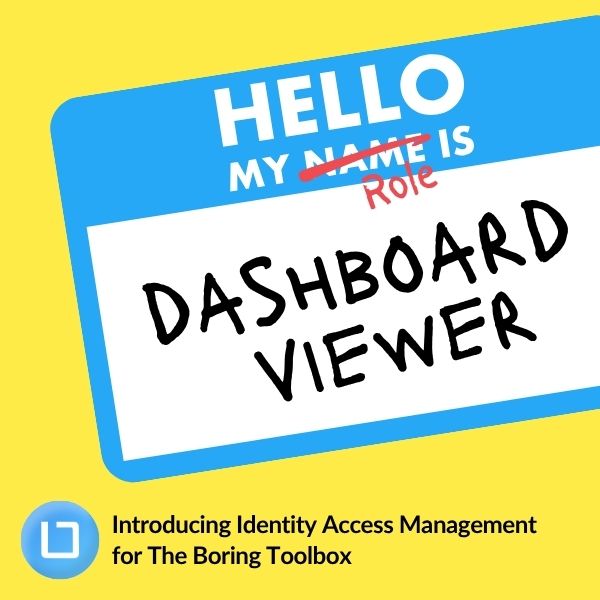
Managing over 240 cameras across a growing city isn’t easy—especially when one person is responsible for it all. See how...
Your integrator just finished installing your video security system, congrats! Now that that’s done, you can finally focus on something else.
JK that’s not how surveillance systems work.

Contrary to popular belief (wishful thinking?) security systems require quite a bit of ongoing management and maintenance. Without regular upkeep, you risk losing video, facing compliance issues, and put your system at risk for cyber-threats.
And speaking from personal experience, the video you miss is rarely the mundane water-cooler talk. It’s the big important incidents that you don’t want to fall through the cracks because you didn’t realize there was a glare in the camera at exactly 3pm or a spider made its new home on lens of door 4 or your SD card was full.
In this blog we are going to give you a list of ongoing management tasks you should be doing as regular upkeep on your video surveillance system.
While most of our advice is applicable to any enterprise video security system, we do have 15+ years of experience managing Milestone XProtect and a special expertise in solving for its management challenges (cough – The Boring Toolbox – cough), so we are going to focus what we know best. However most of this advice is applicable to any surveillance system.
Before we jump into that, let’s talk about one foundational concept that will make you look great and save you time and headaches in the long run.
PS. If you already know all you need to know about key management systems and initial set-up tasks click the button below to skip straight to the section on ongoing management tasks.
When it comes to managing your video security system, taking a proactive approach can save you from the headaches of reactive troubleshooting and ensure a smoother surveillance experience.
Let’s explore the key differences between proactive and reactive system management and see why being proactive is the way to go!
Picture this: You’re strolling through a calm and serene park, anticipating any potential obstacles that may come your way. That’s the essence of proactive system management. It involves identifying and addressing issues before they turn into major problems.
Here are some proactive management strategies you can implement for your Milestone XProtect system:
Create a regular maintenance schedule to perform routine tasks such as software updates, camera firmware checks, and system health assessments. By setting aside dedicated time to address system maintenance, you can stay ahead of any potential issues and keep your system running smoothly.
Utilize health monitoring tools to keep an eye on system performance, camera connectivity, and storage capacity.
By monitoring key metrics, you can identify any abnormalities and take corrective action before they impact your surveillance operations.
The definition of being proactive!
Take advantage of the alarm and notification features to proactively stay informed about critical events. Configure alerts to notify you of potential issues such as camera disconnects, storage failures, or unauthorized access attempts. This way, you can swiftly address these issues and minimize any downtime.
*The default System Monitor Notifications in Milestone XProtect have been known to be a little… over zealous. Occasionally you may find your email inbox flooded with notifications and no clear line to a problem or solution. This can also lead to notification fatigue and therefore missed important alerts.
The Boring Toolbox’s smart notifications solves this issue for Milestone users by consolidating all of the information about your down event into one comprehensive email, making it easier to identify the problem and start troubleshooting faster. These alert’s also give you the ability to customize alert thresholds to ensure every notification is meaningful and doesn’t start to feel like spam.
Imagine walking through that same park, completely oblivious to the obstacles around you until you suddenly trip over them. That’s reactive system management. It involves addressing issues, such as missing video, as they arise, often in a rush to resolve urgent problems.
While there may be situations where reactive management is inevitable, proactive management is ideal and can help you minimize downtime and save time and money on extensive troubleshooting, expensive repairs and hardware replacements.
Before we jump into what you should be doing consistently to keep your video system running smoothly and reliably, here is a quick refresher on the first things you should do after you install Milestone XProtect.
There is a manual way to do all of these or you can use The Boring Toolbox’s bulk change tools and save yourself countless hours.
If you want more information on any of these, we do a deep dive with video tutorials in the blog linked below:
Update the archive configuration on each of your recording servers before you add any cameras.
The default limits the amount of storage your recording server can consume on a physical drive to 1TB so if it is not updated anything recorded over that will be deleted. This is also the time to update your retention time.
You can create new secure passwords in bulk using The Boring Toolbox or do each one manually.
Ideally you want all of your camera and device names to follow a consistent naming convention that makes sense to anyone who might be looking at it.
Check out our blog on camera naming logic.
Creating device groups by manufacture, user group, location (e.g., “Parking Garage,” “Entrance”) or function (e.g., “Cash Registers,” “Production Lines”) will make it infinitely easier to manage and make changes to your system in the future.
Adaptive streaming will make your tile video viewing experience much smoother. Having your device groups already set up will make setting up adaptive streaming a much easier process.
You can see our tutorial on how to quickly set up adaptive streaming here.
Enable a smart codac like Axis’s Zipstream or Hanwha’s Wisestream on every camera that supports it to reduce the amount of storage and network capacity needed. Existing device groups and access to a bulk management tool like The Boring Toolbox will save you lots of time setting this up.
This allows you to control what each user can see and do, ensuring only authorized personnel have access to sensitive information. Creating “role” groups in step 3 will make this quick and painless.
Run a final report and review full system configuration details with your integrator so you can let them know if any names or views need changing.
Now that you’ve heard our spiel on why a proactive approach is better than a reactive approach, let’s talk about some other tasks you should be doing regularly to keep your video security system secure, reliable, and performing exactly how you want it to.
Just like your favorite smartphone apps, your VMS receives regular updates packed with improvements and bug fixes.
These updates address security vulnerabilities and introduce new features that enhance the functionality of your surveillance system. So, don’t skip those update notifications!
Take the time to download and install the latest updates to ensure you’re benefiting from the latest innovations and keeping potential hackers at bay.
Did you know that camera manufacturers often release firmware updates? These updates can improve camera performance, introduce new features, and address known issues.
Keeping your camera firmware up to date not only enhances the overall functionality but also ensures better integration with your VMS.
So, check the manufacturer’s website regularly and update your camera firmware as needed to maximize your surveillance experience.
High-resolution video surveillance generates an abundance of data, and before you know it, your storage capacity could be maxed out.
To avoid running out of space when you need it the most, regularly monitor your storage capacity and plan for expansion if necessary.
Being proactive in managing your storage not only ensures uninterrupted recording but also allows you to retrieve and review past footage when needed.
Keeping your system secure from cybersecurity threats requires proactive password hygiene. IoT devices like IP cameras are often overlooked during security updates, leaving them vulnerable if they have default passwords or outdated firmware. To minimize risk, update your camera passwords regularly.
The Boring Toolbox can automate this process with bulk changes, but manually changing the passwords on your devices is just as effective, although more time consuming.
You can also use The Boring Toolbox to run a password health check on all of your passwords to flag any weak, duplicate, default, or old passwords.
A VMS’s performance is greatly influenced by the hardware on which it runs.
To avoid any hiccups or sluggishness, make sure your system meets the recommended hardware requirements.
Take some time to assess your system’s current resources, such as CPU, RAM, and storage, and consider upgrading if needed.
This small investment can go a long way in ensuring a responsive and efficient surveillance experience.
Don’t wait for a crisis to strike – be proactive in keeping your hardware and storage systems healthy.
Schedule routine system maintenance to identify and resolve any issues before they impact your surveillance operations. This can include tasks like scheduling system health reports, reviewing down events, checking event notifications, and verifying camera connectivity.
The Boring Toolbox makes it easy to monitor the health of your Milestone XProtect VMS. Scheduled reports and real-time health monitoring dashboards allow you to be proactive about the health of your cameras and storage systems while intelligent alerts give you the information you need about down events to resolve issues faster.
Setting up your VMS is just the beginning. Ongoing management is key to ensuring a smoothly running and reliable system. Regular software updates, camera firmware maintenance, storage monitoring, hardware optimization, and routine health checks are all part of the ongoing management process.
By dedicating a little time and effort to these tasks, you can unlock the full potential of your surveillance system and keep your security operations running seamlessly.
Ready to take control of your Milestone XProtect system? Don’t wait – sign up for a free trial of The Boring Toolbox today and see how much easier and less boring it can be to manage your video security system.
Already a user and lover of The Boring Toolbox?
👉 Learn how to enable BoringBot 👈

Your go-to XProtect eXPerts. We learn the technical stuff that will save you time and make it less boring.

Your go-to XProtect eXPerts. We learn the technical stuff that will save you time and make it less boring.

Managing over 240 cameras across a growing city isn’t easy—especially when one person is responsible for it all. See how...

This step-by-step guide shows you how to access Milestone XProtect from anywhere using Tailscale. It’s secure, simple, and way less...

Our new Identity and Access Management (IAM) platform makes it easy to manage what your users can see and do...
Subscribe to get a monthly dose of security & surveillance industry news and insights, Milestone VMS time-saving tricks, tips for hacking your way out of boring work sent directly to your inbox!